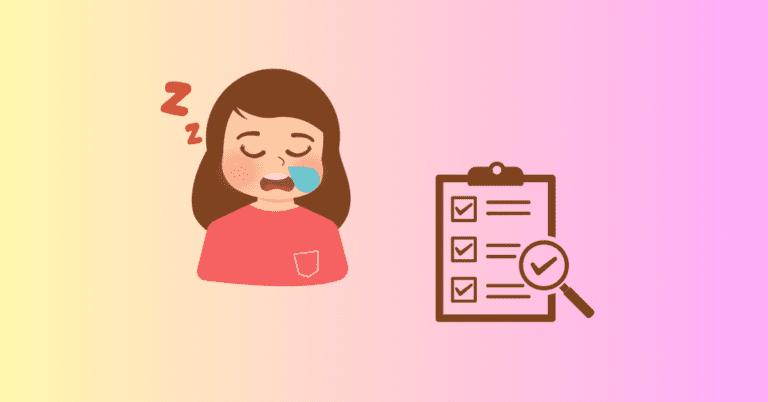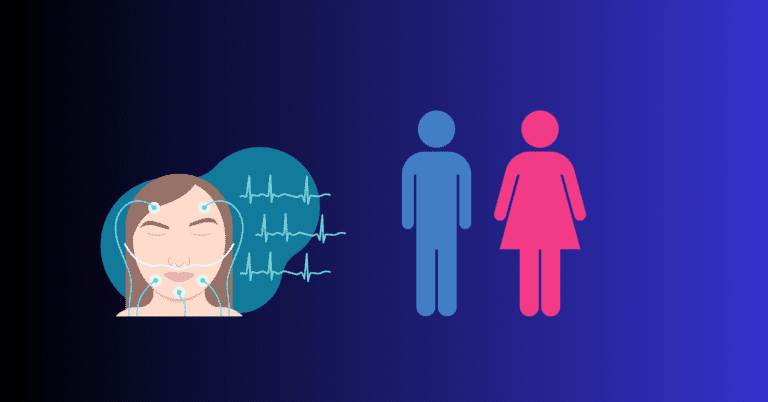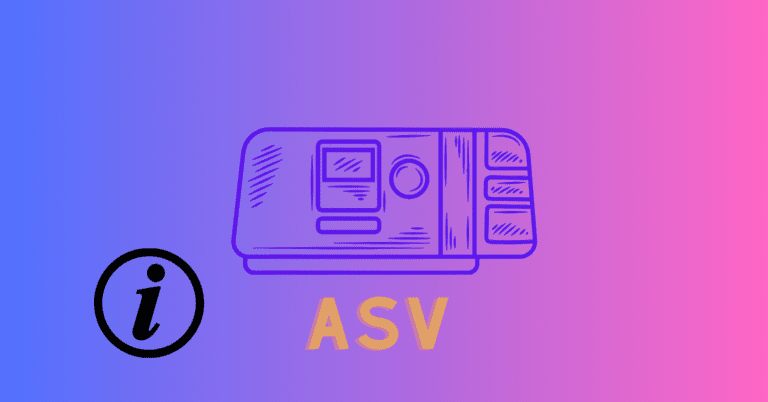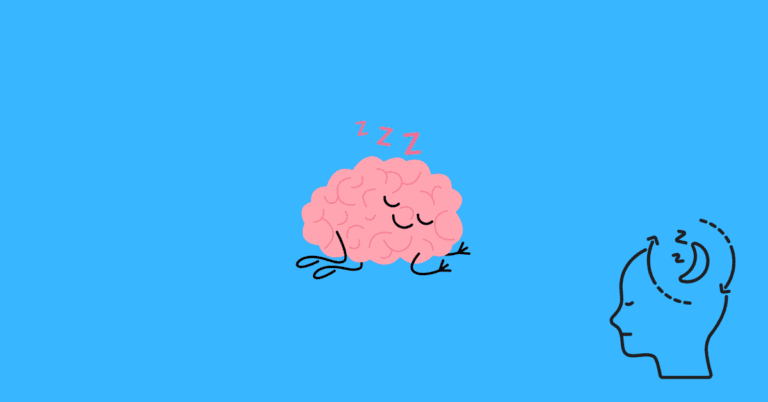Best Sleeping Position for Sleep Apnea
Jeremy Smith is a long-term CPAP user and sleep apnea advocate. After being diagnosed with severe obstructive sleep apnea, he created ByJeremySmith.com to help others navigate CPAP therapy through personal stories, gear reviews, and practical advice.
Finding the best sleeping position for sleep apnea can significantly reduce symptoms and improve sleep quality.
Sleep apnea, particularly obstructive sleep apnea (OSA), occurs when the airway becomes blocked during sleep, leading to pauses in breathing.

While CPAP (Continuous Positive Airway Pressure) therapy and other sleep apnea treatments effectively manage the condition, your sleeping position can also play a crucial role in keeping the airway open.
For me, I have severe OSA, so using a CPAP machine is my only option. Though it is an excellent option and has turned my life around.
This article will explore the best sleeping positions for sleep apnea and how each posture affects breathing.
Side Sleeping: The Best Position for Sleep Apnea
Side sleeping is widely regarded as the best sleeping position for people with obstructive sleep apnea. When you sleep on your side, gravity helps keep the airway open, reducing the likelihood of airway collapse and minimizing apneas during the night.
Benefits of Side Sleeping
- Reduces airway obstruction: Sleeping on your side reduces the likelihood of your tongue and soft tissues in the throat collapsing into the airway, allowing for smoother breathing.
- Decreases snoring: Side sleeping can also reduce snoring, a common symptom of sleep apnea, as it prevents airway blockages that lead to noisy breathing.
- Improves CPAP effectiveness: For those using CPAP therapy, side sleeping can enhance the machine’s effectiveness by keeping the airway more open and requiring less pressure to maintain airflow.
How to Make Side Sleeping More Comfortable
If you’re not used to sleeping on your side, here are some tips to help you adjust:
- Use a supportive pillow: A firm pillow can help align your neck and spine, making side sleeping more comfortable.
- Try a body pillow: A full-length body pillow can provide extra support, especially if you tend to roll onto your back during the night.
Sleeping on Your Back: A Position to Avoid
While sleeping on your back may be comfortable for some, it’s generally not recommended for individuals with obstructive sleep apnea.
In this position, gravity causes the tongue and soft tissues in the throat to fall backward, leading to increased airway obstruction. This can worsen both snoring and apnea episodes.
Why Back Sleeping Worsens Sleep Apnea
- Airway collapse: When you lie on your back, the relaxed muscles in your throat are more likely to block the airway, making breathing harder.
- Increased apneas: Studies have shown that people with sleep apnea tend to experience more apneas and longer breathing interruptions when sleeping on their back.
Positional Therapy to Avoid Back Sleeping
For people with position-dependent sleep apnea, positional therapy can help train the body to avoid back sleeping. This can include:
- Special pillows: Wedge pillows or sleep positioners can keep you propped on your side throughout the night.
- Wearable devices: Some devices are worn on the back and vibrate gently when you roll onto your back, encouraging you to return to a side-sleeping position.
Stomach Sleeping: A Viable Alternative
Though less common, stomach sleeping can be a viable alternative for some people with sleep apnea. In this position, gravity helps keep the airway open, preventing the tongue from falling backward and blocking the airway. However, sleeping on your stomach can present its own challenges, especially for those using CPAP therapy.
Challenges of Stomach Sleeping
- Neck and back strain: Sleeping on your stomach can put pressure on your neck and spine, potentially leading to discomfort or pain.
- CPAP mask compatibility: If you use a CPAP machine, finding a comfortable way to sleep on your stomach with the mask on can be difficult. You may need to experiment with different mask styles, such as a nasal pillow mask, to find one that works well in this position.
Despite these challenges, stomach sleeping can still help reduce airway blockages in people with mild to moderate sleep apnea.
Elevated Sleeping: Using Pillows or an Adjustable Bed
Another effective strategy for reducing sleep apnea symptoms is elevating the upper body while sleeping. This can be achieved by using extra pillows or an adjustable bed to keep the head and upper body raised. Elevating the head helps prevent airway obstruction by reducing the pressure on the throat and keeping the airway more open.
Benefits of Elevated Sleeping
- Reduced snoring: Sleeping with your head elevated can minimize snoring, as it helps prevent the tongue and soft tissues from collapsing into the airway.
- Improved breathing: Elevating the upper body promotes better airflow and reduces the likelihood of apneas during the night.
How to Elevate Your Sleep Position
- Wedge pillows: These pillows are designed to raise the upper body at an angle, providing elevation without putting strain on the neck.
- Adjustable beds: For a more permanent solution, an adjustable bed allows you to customize the angle of elevation to find the most comfortable position for breathing.
What’s the Best Sleeping Position for Sleep Apnea?
So, what’s the best sleeping position for sleep apnea? For most people, side sleeping is the ideal position, as it helps keep the airway open and reduces the risk of apneas.
However, each person’s needs are different, and it’s important to find a sleeping position that works best for your body and comfort level.
For me I find side sleeping the most comfortable using the mask. As you can imagine, stomach sleeping would be impossible.
If side sleeping isn’t comfortable or practical for you, consider trying elevated sleeping or stomach sleeping as alternatives. Avoid back sleeping, as it is the most likely to worsen sleep apnea symptoms.
Conclusion: Finding Your Ideal Sleeping Position
Your sleeping position can significantly impact the severity and quality of your sleep apnea symptoms.
Side sleeping is generally considered the best position for sleep apnea, but other options, such as stomach sleeping or elevating the upper body, can also help improve airflow and reduce apneas.
If you’re having trouble finding the right sleeping position, consult your doctor or sleep specialist.
They can help you determine the best sleeping posture and other treatment options, such as CPAP therapy, to manage your sleep apnea effectively.
Thanks for reading my article on the best sleeping position for sleep apnea. Please share your experiences in the comments below.
Disclaimer: The content on this blog is for informational and educational purposes only and is not a substitute for professional medical advice. Always speak with your doctor or sleep specialist before starting, stopping, or changing any treatment or therapy related to sleep apnea or CPAP use.





